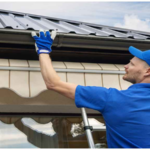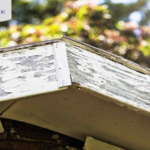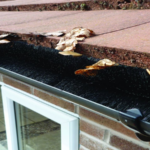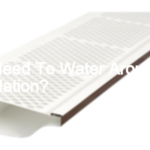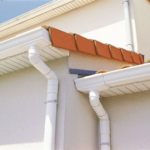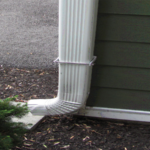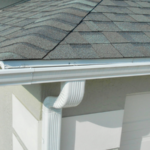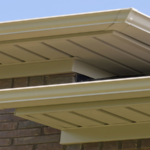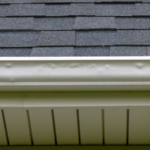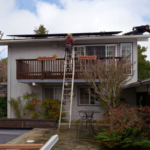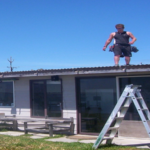There are a few different ways that landscapers can keep water away from the foundation of a home. One common method is to install a French drain. This is a type of drainage system that consists of a perforated pipe that is placed in a gravel-filled trench. The pipe collects water from the surrounding soil and drains it away from the foundation.
Another method is to install a gutter system. This collects rainwater from the roof and drains it away from the foundation.
Finally, landscapers can also grade the soil around the foundation so that it slopes away from the house. This helps to prevent water from pooling around the foundation.
How do I stop water pooling around my foundation?
- Begin by examining the exterior of your home and look for any obvious signs of water pooling or leaks.
- If you can identify the problem areas, take measures to correct them. This may involve re-grading the ground around your foundation, repairing gutters or downspouts, or making other adjustments.
- Once you have corrected the immediate problem, take steps to prevent future water issues. This may include installing a foundation drainage system, sealing cracks and gaps in your foundation, and making sure gutters and downspouts are in good working order.
- Regularly check the exterior of your home for any signs of water pooling or leaks, and take action immediately to fix any problems.
What is the best landscaping material around foundation?
There are many factors to consider when choosing a landscaping material around foundation. The best material depends on the climate, the location of the foundation, and the overall style of the home.
In general, foundation landscaping should be low-maintenance and drought-tolerant. This means choosing materials that are easy to care for and don’t require a lot of water. Gravel is a good choice for foundation landscaping because it drains well and doesn’t need much water. Other good choices include native plants, cacti, and succulents.
When choosing a landscaping material around foundation, it’s also important to consider the climate. If the area is prone to extreme temperatures, choose materials that can withstand the heat or cold. For example, in very hot climates, concrete or stone pavers are a good choice because they don’t absorb heat. In cold climates, brick is a good choice because it doesn’t crack in freezing temperatures.
The location of the foundation is also important to consider when choosing a landscaping material. If the foundation is in a sunny spot, choose materials that can tolerate direct sunlight. If the foundation is in a shady spot, choose materials that can tolerate partial shade.
How do I keep water out of my foundation without gutters?
- Inspect the perimeter of your foundation for any cracks or gaps. If you find any, seal them with caulk or another appropriate sealant.
- Check the grading around your foundation. Make sure it slopes away from the foundation at a minimum of 6 inches per 10 feet.
- Install an underground drainage system if you don’t already have one. This will help redirect water away from your foundation.
- Cover the ground around your foundation with a layer of mulch. This will help absorb any water that does seep through.
- Place gutters around the perimeter of your roof. Make sure they are properly installed and free of any debris so that they can effectively channel water away from your foundation.
Will landscape edging divert water?
Yes, landscape edging can divert water. By redirecting runoff and rainwater away from your home’s foundation, you can prevent water damage and erosion. By installing an edging system, you can also create a barrier that will protect your landscaping from being trampled.
Will gravel around house help drainage?
Adding gravel around your house can help with drainage in a few ways. First, gravel can act as a buffer to keep water from pooling too close to your foundation. Second, gravel can help absorb some of the water that would otherwise pool on your property. Third, gravel can help direct water flow away from your house and into a drainage ditch or other drainage system.
Is it okay to put sand around foundation?
If you live in an area with sandy soil, it’s important to take measures to protect your home’s foundation. Sand can erode the concrete and masonry that make up your foundation, leading to cracks and other structural damage. One way to protect your foundation is to install a foundation drain. This is a perforated pipe that’s installed around the perimeter of your foundation. The pipe collects water that seeps into the ground around your foundation and drains it away from your home.
Another way to protect your foundation from sand erosion is to install a layer of filter fabric around the foundation. This fabric helps to prevent sand from washing away from the foundation. You can also add a layer of gravel on top of the fabric to further help with drainage.
Does landscape fabric allow drainage?
Landscape fabric is often used as part of a drainage system. The fabric helps to keep soil in place while allowing water to seep through. This can help to prevent erosion and can make it easier for plants to get the water they need.
Why is there water around my foundation?
There are many possible explanations for water around a foundation. It could be that the soil is too saturated and needs to be drained. It could be that there is a leak in the foundation that is causing water to seep in. It could also be that rainwater is not draining properly away from the foundation. Whatever the cause, it is important to address the issue as soon as possible to avoid further damage to the foundation.
Should I put plastic around my foundation?
There are a few things to consider when deciding whether or not to put plastic around your foundation. The main reason people choose to do this is to prevent water damage. If your home is in an area with high water table levels or is prone to flooding, putting plastic around your foundation can help keep your basement dry. Additionally, if you live in an area with a lot of rainfall, the plastic can help keep water from seeping into your foundation and causing cracks.
Another reason people put plastic around their foundation is to create a vapor barrier. This can help prevent moisture from entering your home through the foundation and causing problems like mold and mildew. If you live in a humid climate, a vapor barrier can be a good way to keep your home more comfortable.
There are a few things to consider when deciding whether or not to put plastic around your foundation. The main reason people choose to do this is to prevent water damage. If your home is in an area with high water table levels or is prone to flooding, putting plastic around your foundation can help keep your basement dry. Additionally, if you live in an area with a lot of rainfall, the plastic can help keep water from seeping into your foundation and causing cracks.
Bottom Line
There are a few different ways that landscapers can keep water away from foundation. One is to make sure that the ground slopes away from the house. Another is to install gutters and downspouts to direct water away from the foundation. And finally, landscapers can also install French drains to help collect and redirect water.

